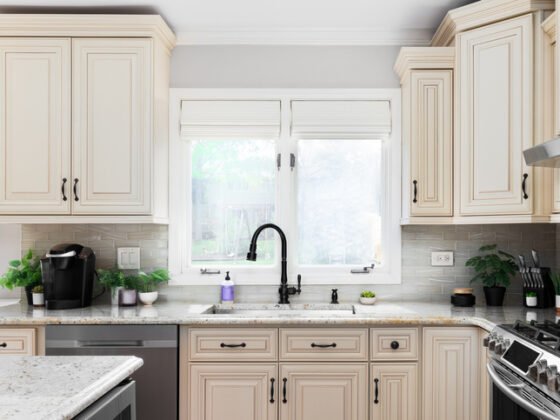Table of Contents Show
The walls of your home endure daily wear and tear and require periodic maintenance to stay fresh over years of use. From concealed plumbing leaks to grime accumulation, potential issues threaten your walls’ appearance and structure.
Catching problems early and utilizing preventative care preserves the condition and lifespan of all the different types of walls within your house. Follow these key maintenance tips to support healthy walls that withstand busy family lifestyles.
1. Inspect For Plumbing Leaks
Hidden water leaks behind walls cause immense damage if left undetected. Regularly inspect water fixtures like showers, tubs, sinks, dishwashers, and washing machines for any moisture or cracks indicating a leak.
Watermarks, mold, peeling surfaces, or damp drywall signal issues. Catching leaks quickly minimize repairs. Also, address high humidity promoting mold growth. Keep walls around plumbing dry.
2. Repair Holes, Cracks, And Dents
Fixing small holes, cracks, dents, and other surface damage prevents further decay and restores appeal. Use spackle or drywall compound to fill holes and dents; sand smooth once dry.
Seal minor cracks with caulk designed for your wall material. Touch-up paints blend repairs into existing colors. Don’t ignore minor flaws since they tend to worsen over time. Keep walls looking fresh.
3. Wash Dirt And Grime
Over time, everyday dirt accumulates on walls near high-traffic areas. Greasy residues in kitchens or dirt marks in entryways appear.
Use a general cleaner or mild soap and water with soft sponges to gently wash walls, avoiding harsh scrubbing which dulls paint. Rinse and let dry.
Establish a regular cleaning routine based on buildup to limit grime. Washable surfaces simplify maintenance.
4. Fix Exterior Damage
Outside walls withstand weathering and require inspection for any damage needing repair. Look for cracked, peeling, or missing siding, trim, shutters, and shingles allowing water infiltration or pest entry.
Seal gaps with caulk and replace damaged areas. Keep exterior paint or stain fresh. Install lighting to deter nocturnal animal visitors. Protecting outer walls preserves the structure and avoids interior water issues.
5. Reapply Vapor Barriers
Moisture penetrating porous exterior walls causes mildew and mold growth within the wall cavity. Ensure exterior walls contain vapor barriers – sheets or membranes that block moisture – per building codes.
If not, consider retroactively installing house wrap under new siding. Reapply vapor barriers when replacing exterior finishes. Proper moisture blocking protects wall interiors over the long term.
6. Update Insulation
Improving old or inadequate insulation regulates interior temperatures better while lowering energy bills. Outdated materials compact over time, losing efficiency.
Add supplemental insulation between studs or on top of existing insulation. Blown-in types work well for retrofits. Reevaluate insulation levels whenever replacing drywall or exterior siding. Well-insulated walls increase comfort and savings.
7. Guard Against Pests
Detecting and sealing any exterior cracks or holes deters pest entry, protecting walls from damage. Maintain caulk seals around windows, doors, pipes, and wires running outside.
Trim back foliage touching the home. Install mesh screens over vents and drain grates. Implement baits or traps around the perimeter. Keeping pests out preserves wall integrity. Monitor for signs like droppings or chewing.
8. Control Moisture And Ventilation
Managing household moisture prevents problematic condensation and humidity that lead to peeling paint, mildew, and mold growth on walls. Avoid hanging wet towels to dry inside.
Run bathroom fans during and after showering. Use range hoods when cooking. Dehumidifiers help regulate moisture in damp basements or humid climates. Open windows periodically for fresh air circulation.
9. Clean Painted Surfaces
Keep painted walls looking freshly coated by cleaning periodically per manufacturer directions to remove grime buildup. Avoid abrasive scouring pads that dull sheen.
Use mild cleaners and microfiber cloths. Wash walls from top to bottom gently with minimal moisture and let fully dry. Schedule a quick cleaning session yearly when changing smoke detector batteries as a helpful reminder.
10. Touch Up Paint
Expect some nicks and scrapes on walls over the years. Carry matching wall paint for quick touch-ups and spot coverage.
Dab on thin coats to cover scuffs and scratches, blending with the surrounding paint. Touch up annually or between tenants. When repainting entire rooms, save leftover paint for touch-ups.
Well-matching paints hide imperfections. Touch up often to keep walls looking their best.










